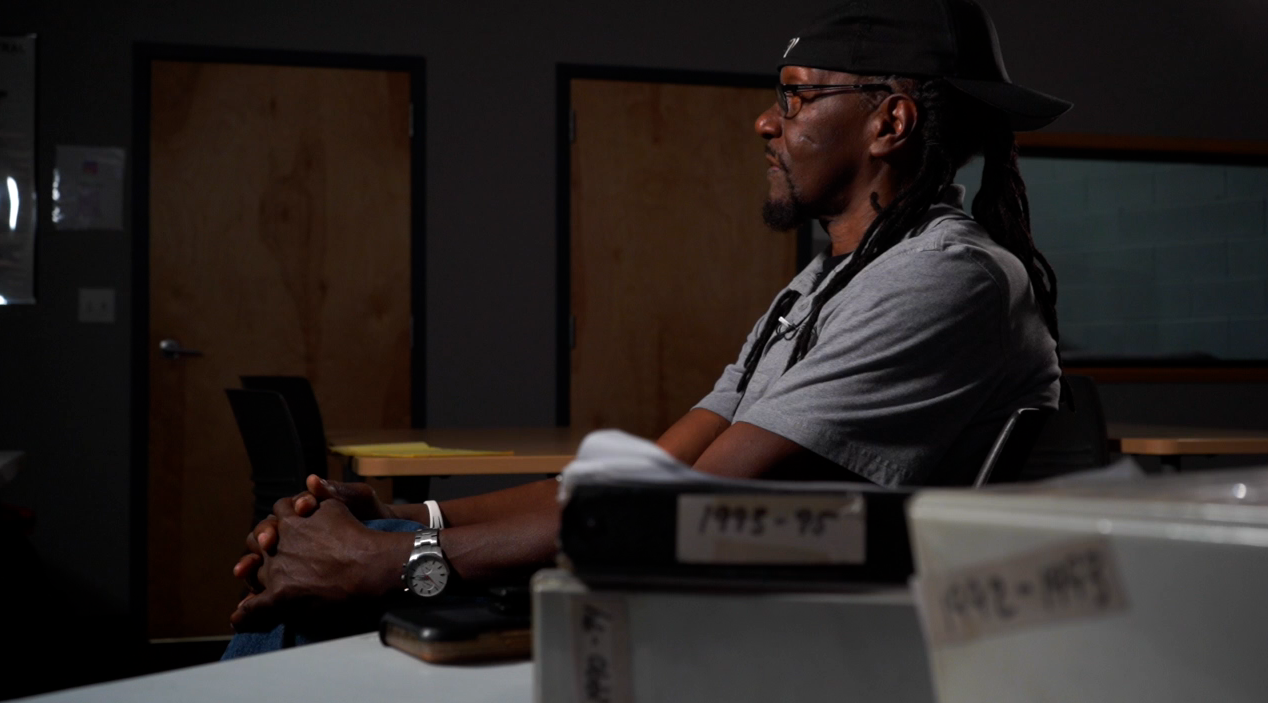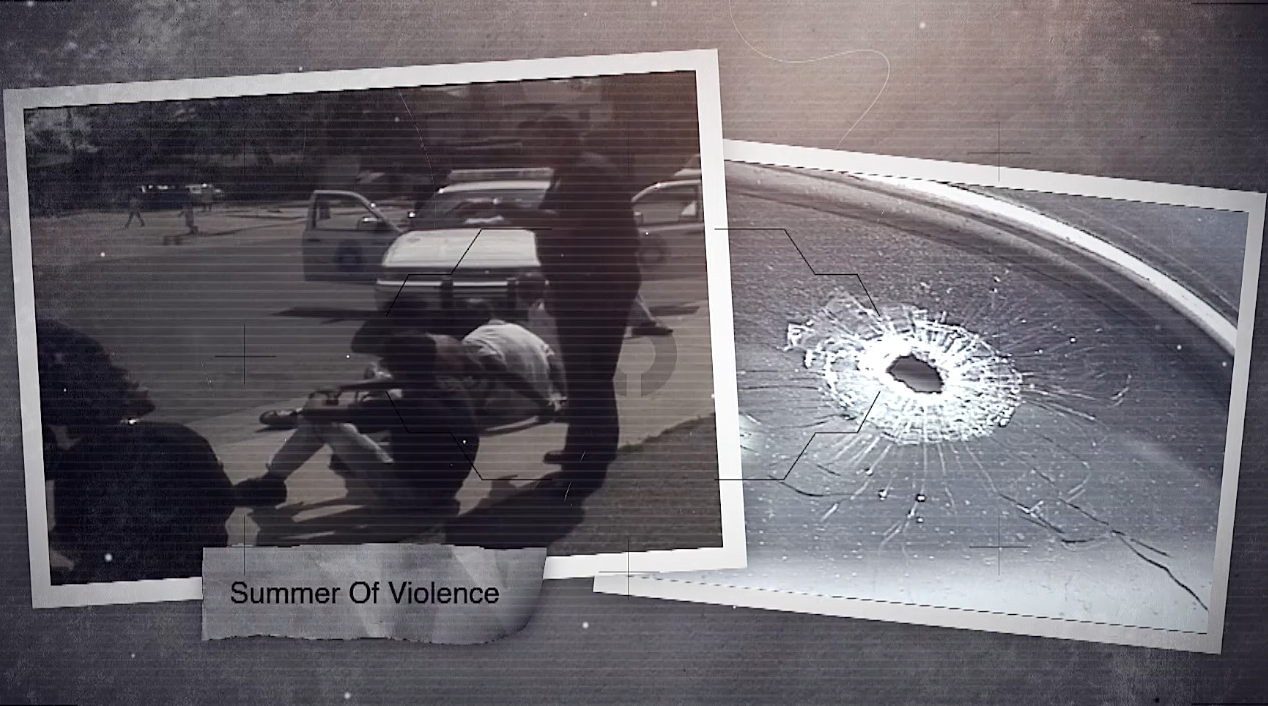DENVER — This summer marked the 30-year anniversary of “The Summer of Violence”, a name given to a months-long time frame in Denver in 1993 that was defined by youth violence, dozens of deaths, and dozens of teens that were given life sentences.
Decades after that deadly summer, families and community leaders directly impacted by the events still feel the effects in 2023.
“The shootings at the beginning of this was more so to intimidate because they’d seen Colors and Boyz N The Hood and all this stuff. And they thought it was cool,” Reverend Leon Kelly, Executive Director of Open Door Youth Gang Alternative Program, one of the oldest anti-gang programs in Colorado said. Kelly founded Open Door in 1982.
“The thing that made me get started in this field was the introduction of the gangs coming from California, the influences that we were experiencing, with many of our young kids of those who were coming from California was something that I felt was going to be serious if not dealt with,” Kelly said.

By 1990, Kelly said his fears became a reality.
“When the bullets started to hit their mark, it took it to another level,” Kelly said. “The first drive by that I recorded was Delante Carolina, a 16-year-old kid, who just walked out of the house, made it to the corner to get his sister a pop. He got to the corner, a car was going past 29th — didn’t know this kid from Adam, all they saw was the flag out of his back pocket, which was his brother's and an arm came out the back then ‘pow pow’.”
Carolina died on a nearby front door step.
“I started that death list to you know show the concerns I had of people who were losing their lives, kids who were losing their lives behind this,” Kelly said.
One name on that list is Geronimo Maestas. In 1993 a 17-year-old stood trial for his murder.
Murder over a Broncos jacket
James Miller was born in Denver’s Park Hill neighborhood and said the Summer of ’93 was the pinnacle of his gang activities.

“I was full-fledged gang banging at the age of 17,” Miller said. “I was selling drugs, smoking weed, getting drunk on a daily basis, terrorizing the neighborhood.”
Miller said for him, his gang was a brotherhood.
“I think me wanting more made me, you know be involved in a gang,” Miller said. “I was a part of it, I lived it, everyday it was a scary time. You gotta think people were getting killed every other day during that time. At 16, 17-years-old, how do you really gauge that, or how do you explain to your mother why you didn’t come home last night, because I didn’t want nobody to shoot the house up.”
Miller said at that time a lot of his friends were killed, but the death of stranger would have the biggest impact on his life.
“I was accused of killing a young man for his Broncos jacket,” Miller said.
That young man was 16-year-old Geronimo Maestas.
Maestas was on his way from his girlfriends house the day after Thanksgiving on November 26th, 1993 when he was approached by three gang members.
Fellow gang members testified against Miller and accused him of shooting and killing Maestas.
Almost 30 years after the crime, Miller maintains he did not shoot Maestas.
“During my trial I was found not guilty of first degree murder, convicted of attempted aggravated robbery, conspiracy to commit robbery and first degree assault. I was given 64 years all together,” Miller said. “I have remorse for the family and for the victim but you know everyone looks at me and says you did this but I didn’t do this crime,” Miller said.
Miller spent 26 years behind bars and was released in August 2020.
“People don’t understand, jail is a different world, you got people in there that’s never coming home. Everything is a mental struggle every day to wake up and do the same thing over and over again — it’s like living in ground hogs day,” Miller said. “I’m hoping to get involved with the open-door program to where I can help kids avoid the route I went to, I mean I don’t wish that on my worst enemy. I really don’t.“
Why was 1993 different?
“I still deal with a lot of these guys or girls who over the years still call me from prison,” Kelly said.
As he reflects on 1993 and teens like James Miller who spent decades in prison, Kelly says he thinks about what made 1993 different.
“ ‘90, ‘91, ‘92. I think there was 30 something on my death list. We come to ’93 and it made history here in this state and they labeled it the 'Summer of Violence' and I looked at my list and I had to say wait a minute,” Kelly said. “I looked at Jack Roth, this man driving in his Mercedes going down Montview when a group of kids came up on the side of him, boom boom boom, shot up his car." said Kelly. "He drove up on the line and he died. Then we had a schoolteacher coming from Jefferson County excited about the opportunities of working in the school system, Mary Anne Lowe. She was moving stuff from her car to her apartment here in the metro area. I guess some little gangsters, they saw her, tried to get control of her purse — she didn’t want to let it go, they came out, boom they killed her.”
Kelly said while those killings were horrendous, all of the killings in the 1990s and beyond were senseless and tragic.
He started to reflect on what made the summer of ’93 different from other summers that saw more deaths.
“None of those people look like me, now all of a sudden it’s the summer of violence,“ Kelly said. “The number of deaths in ‘93 was lower than it was in ‘91 and ‘92, so we did all of that in ‘93. ‘94, after the pressure was off the numbers went up, ‘95, numbers went up.”
A Mother’s nightmare
“In ’95 that’s when I noticed it, the violence,” Susanne Price said. “My nephew witnessed a gang death, a young boy being killed and then right after that Andre was killed.”

In 1995, Susanne Price’s 21-year-old son Andre Price was shot and killed.
“He was my first born. I mean I thought he was a good kid, that’s my child. He had a daughter in high school — she’s 31 now,” Price said.
Andre went to Montbello High School.
“I worked for Frontier Airlines and I came home from work and he met me at the garage and said ‘mom would you keep Desiree?’, which that’s his daughter. At the time she was 3-years-old and I said yes. I felt if I had of said no, you know I blame myself. But if I’d have said ‘no, you can’t go’ I don’t think he would’ve went because he had her,” Price said. “So he went over to his cousin's house and not even 30 minutes later they called me and said Andre got shot.”
Price said witness told her Andre was shot almost a dozen times.
“They actually told me he died on the ground. That’s what they told me when I got there and I lost it, yeah I lost it.,” Susanne said. “I came home, and I was like, in a no man’s land.”
Price said after the funeral she started her own investigation and she thinks she knows who killed her son. But with no one willing to talk, her son’s case is still unsolved.
“I have a very angry heart. 28 years, and I feel these young men, 4 of them, walking around here like they never did anything,” Price said. “I want them to feel the pain I have felt for 28 years. I just want justice and its hard when you don’t have justice, its really hard. It’s not going to make me feel any better but just knowing the ones that was out that had something to do with killing him is not walking around free.”
Price said it’s upsetting to see those convicted of crimes stemming from 90’s gang violence get released from prison.
“They shouldn’t get out. A life for a life, that’s the way I look at it. Why? So you go out there and do it over again? Who’s to say they won’t do it again? You take a life, yours need to be taken. Am I wrong for that?” Susanne asked. “Maybe I’m wrong for that but do they understand what they put other mothers, fathers, sisters and brothers through when they do what they do? I tell people today, why don’t they have a family reunion and kill they own family? Stop taking other people’s families away from them.”
“My heart goes out to Ms. Price and many others who are still living that, being tormented by their loved ones murders that have not been solved,” Reverend Kelly said.
He has also been personally impacted by the murder of a young person.
“I have a nephew who was killed in February 24th of 2000 you know by gangsters and all that,” Kelly said. “My sister felt that she didn’t want anything short of being able to push the plunger on that chemical that was going to kill the person that killed her son. What these parents, mainly mothers are going through, they’re traumatized. They're going through this feeling of just not knowing. The killer, the murderer of their loved one is out here walking around.”
30 Years Later
“30 years later, when I say that I’m dealing with the offspring of the offspring, a lot of these kids have never met their father or their mother because they’re locked up or dead,” Kelly said.

Kelly said we’re feeling the impacts of those family dynamics. “My average age on my death list back then was between 17 and 24. My average right now I’m dealing with is between 12 and 17,” Kelly said.
Kelly said the nickname “Summer of Violence” restricts the youth violence to a 3-month timeframe and dismisses the failed policies that allowed the violence to continue.
“People would say, that my spirit, my attitude is getting a little more callous over these decades and maybe it is, based on what I’ve seen, based on what I’ve had to deal with,” Kelly said
But she said there’s hope.
“Because when one loses total hope, one develops the attitude, I just don’t care, I don’t care, I don’t care, I don’t care,” Kelly said.
She said as a society, there’s far too much to lose to stop caring.
Kelly said we can look at the Summer of 1993 to learn how to save the next generation from heart wrenching, life changing, unimaginable loss.





